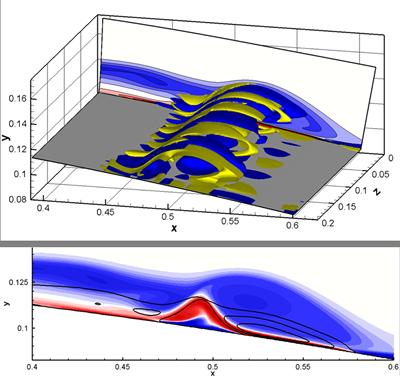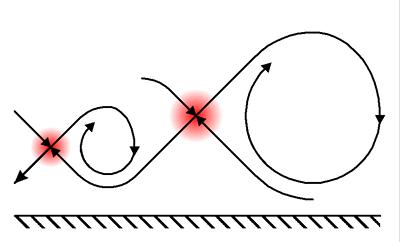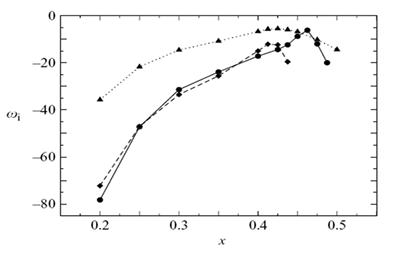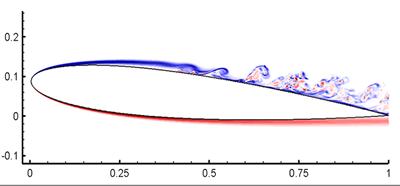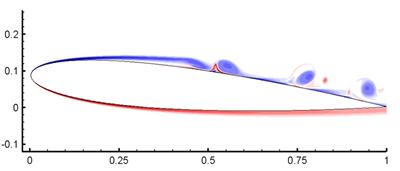Research project: Aerofoil separation bubbles
The stall behaviour of aerofoils at low and moderate Reynolds numbers is often determined by the behaviour of transitional separation bubbles, in which a laminar boundary layer separates, undergoes transition to turbulence and subsequently reattaches as a turbulent boundary layer. Such separation bubbles act as a site of laminar-turbulent transition and the ultimate breakdown of the reattachment process then dictates the maximum lift possible with the aerofoil.
